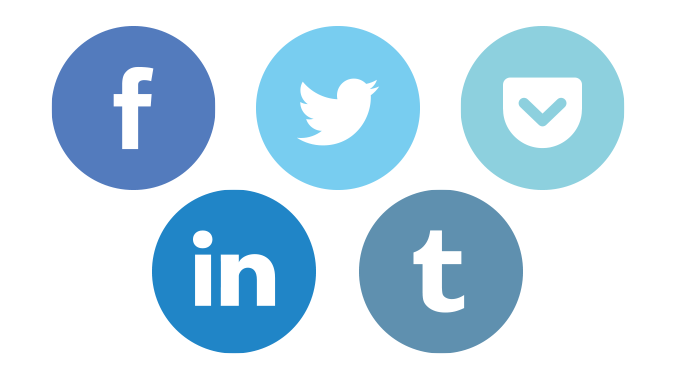How to plug social networks sharing features in your app
Written by Dumè Siacci on

Your GoodBarber app embeds social sharing features that will help your users to spread the word about your content. It means that almost everywhere in the app, your readers have access to a "share" button that will lead them the sharing screen.
You've probably already added such features to your website: you can easily understand that the more the process will be easy for your users to share your posts or videos, the more they'll share it :)
Since the GoodBarber 2.5 Salvador release, we've also integrated Facebook likes into the apps. It means that once your reader is logged in your app with his Facebook account, he'll just have to click on the "heart" button to like the post he's reading. It's not exactly the same action than a real Facebook share: a share will create a new post in the user's timeline, and a like will just appear in the Facebook ticker feed.
To be honnest, as a Facebook user, I prefer most of the times to just "like" a blog post than to actually "share" it to my friends: the two actions are totally different and apply in different situations.
GoodBarber also allows you to ask your users to login using Facebook or Twitter to post a comment, to bookmark a content, or to submit a picture/video/text from a Submit section. You should enable this feature if you don't want the comments on your website to be anonymous.
So ... what do I have to do to plug these social networks to my app?
In order to plug social networks in your mobile app, you'll have to create "an app" on each social network. I know ... all this wording can be confusing :)
What we call "an app on Facebook", or "an app on Twitter", is a kind of project that you'll create in the developer area of Twitter or Facebook. In fact, you are going to declare your mobile app to these services.
It means that once your app is declared on Facebook, people connecting to Facebook from your app will be identified as users of your "Facebook app". And when they will share a blog post from your app to their friends, it will appear as coming from *your* app.
That's an interesting point, because as your user base is growing, it can become a new promotional way for your app!
On some other network, like Pocket for instance, your app will be used only to allow the user to perform the sharing action.
For each social network, you can find online helps in your GoodBarber backend detailing the process to follow.
Which social networks can I connect to my GoodBarber app?
Your GoodBarber iOS and HTML5 apps have native sharing features for Facebook, Twitter, Linkedin, Tumblr and Pocket. Your Android app has native sharing features for Facebook, Twitter and Pocket.
Before building your app you will be asked to follow the procedure to declare your app on these networks. This process is optional: you can ask to disable all the sharing features from your app. But, trust me, that wouldn't be a good idea!
For each social network that you'll set up, you'll have to enter the credentials that you'll find in their developer area. If you don't enter your Facebook app id, for instance, the Facebook features will be disabled in your app.
Keep in mind that, unfortunately, changing these settings implies to build your app and submit it again to the store. So you should think about it before the first publication.
In the specific case of Facebook, you'll have to follow a specific procedure to enable the "like" action. As it is an OpenGraph action, you need to submit it for approval to Facebook. Until Facebook has approved your like action, users won't be able to use it in your app.
And, what about Social analytics?
The other interesting point with the social networks intergration in your app will be that you'll be able to collect useful data about your users.
When they'll login with Twitter or Facebook from your app, your GoodBarber backend will give you some interesting insights, such as the age and gender repartition in your user base, how powerful your readers are on social networks, based on the number of connections they have, and other cool stuff.
Used wisely, it's a very powerful tool to analyze your audience :)
So, why wouldn't you allow your readers to share your content on social networks?